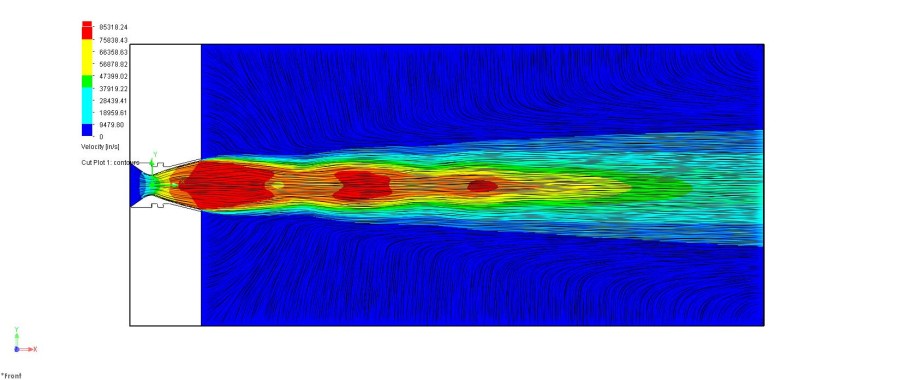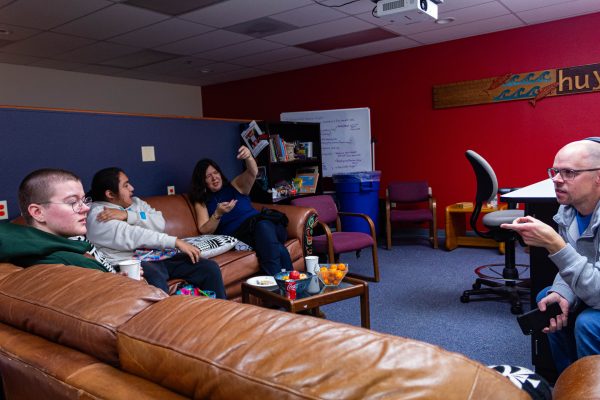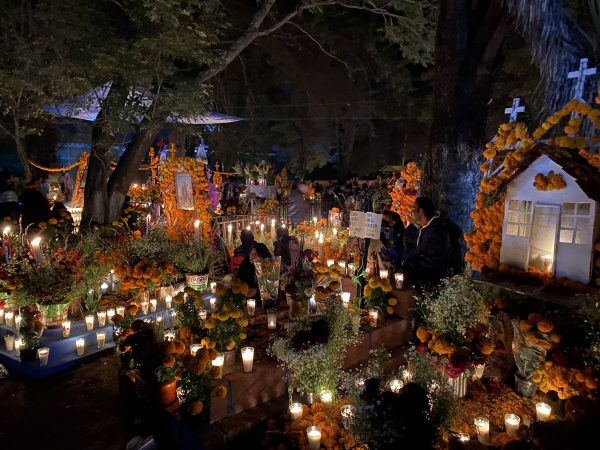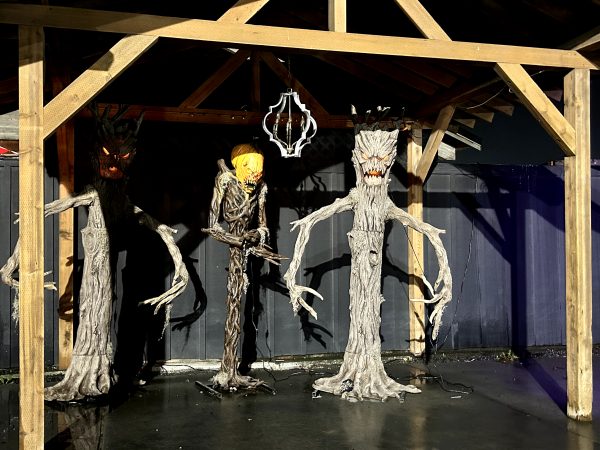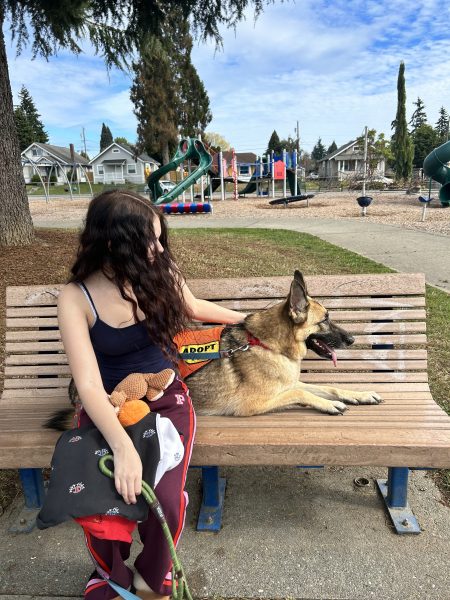It’s Not Rocket Science… Oh Wait, Is It?
EvCC Students Build Rocket with NASA
An infrared graph which shows the temperature of the exhaust as it leaves the nozzle of the rocket. // courtesy of Trent Zingleman
In the fall of 2014 Trent Zingleman, Dilraj Bal and Emmanuel “Robert” Harley, three students from Engineering Club began working on a project which will put EvCC on the map for generations to come. In a few months they have built a motor and test stand. A process which is normally a two year long task of designing, modeling and researching. Now with the student senate approved the budget the sky’s the limit, but not for the hybrid rocket. At twenty-four feet tall and only eight-inches wide, this prototype is projected to break 25,000 feet on its maiden voyage.
The Engineering Club is open to all students and focuses on several main goals. These include socializing and building networks, community outreach programs, as well as building and designing things. Matthew Parsons, club advisor said this particular design team is “operating at an engineering graduate school level.” and their work has caught the attention of NASA (National Aeronautics and Space Administration).
Here on campus the Art Alliance, Algorithm Club, Engineering Club and Welder’s Society of America will all be involved. Far beyond EvCC’s overstuffed parking lots, students at the University of Washington as well as AMTEC (Advanced Manufacturing Education and Training Center) have had a hand in advising, planning and building.
NASA has been involved since the beginning of the project. They meet regularly with the team through phone and email. If there are any questions NASA answers them, provides feedback and also presents research resources that the students wouldn’t have had access to without their help.
The budget total for this project is $18,400.99, a seemingly substantial amount but this project will benefit students for many years. After the initial purchasing of material, filling out permits, and transportation costs, actual maintenance and upkeep of the rocket will be just $650. This includes fueling the craft as well. The maintenance is quite simple for such a large piece of equipment. The only thing it consistently needs is replacement insulation to protect it from the extreme temperatures.
Creating the fuel doesn’t involve mixing chemicals like more traditional substances. The fuel injector swirls the nitrogen oxide in order to spread itself throughout more evenly. This allows for greater temperature resistance and is much less dangerous.
“We have been doing research and calculations that they don’t even offer at EvCC. My perspective on the whole process has been very unique. This whole project has turned into quasi-company,” said Trent Zingleman, part of the design team and a student at EvCC, “We are the engineers that design the rocket and then we send those designs down to AMTEC who machines our parts. Once those parts are machined they are sent back to us and we assemble it.”
“Then, for testing we take it down to the Aviation Center and have them create testing procedures and safety precautions,” Zingleman added, “we are also getting the art department to do the visual styling on the whole thing. Each group is like a part of a branch of a company and it really feels that way. I just started doing this project because I thought the whole idea was pretty awesome. Now it has turned into something so much bigger than that and has given me so much experience on how things are actually made. It really isn’t that easy. No classroom can give you an experience like this one.”
As amazing as all of this is one thing eclipses it all, the longevity of the project. New students will be able to bring their fresh ideas to improve the initial design, without them having to start from scratch. Doors will be opened for students long after this team has graduated and left. Relationships with NASA and every other company involved will pave the way for internships and future careers.
There is an upcoming engine test in spring at Paine Field where the motor will be mounted to the test stand and started. Aviation Maintenance, a department of EvCC, operates out of Paine Field, and will be tasked with setup, safety procedures and executing the actual test. The first launch will be in Nevada and is expected to be streamed through EvCC’s website in June. From there, current and future Engineering Club members will boldly go where no Everett Community College club has gone before: to the stars.

